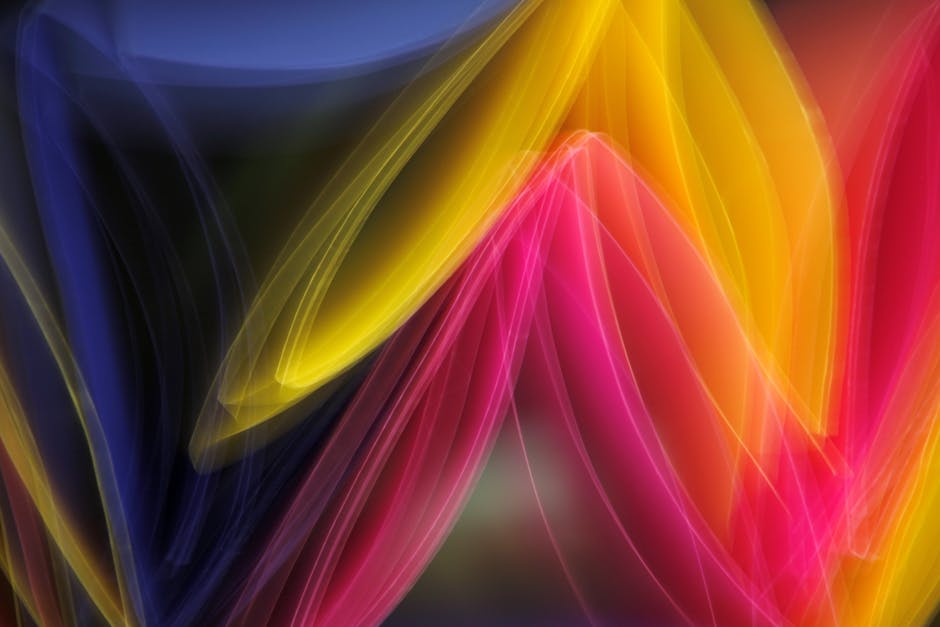Understanding Color Psychology
Color psychology influences how we perceive spaces and art. It's a tool artists use to affect our emotions and thoughts. Let's explore some common colors and their impacts:
- Red: A powerful hue associated with love and warnings. It can increase heart rate and create excitement or tension.
- Blue: Often calming and tranquil, like a soft blanket. In some cultures, it may evoke sadness.
- Green: Typically represents nature and peace. In art, it can also suggest jealousy.
- Yellow: Bright and cheerful, but can sometimes create anxious energy.
- Purple: Associated with mystery and royalty. It adds an enchanting quality to artwork.
- Black and white: Classic colors with varied meanings. Black can represent elegance or melancholy, while white often symbolizes purity or emptiness.
Artists use these colors to communicate emotions and stories without words. Cultural context and personal experiences can influence how we interpret these color messages in art.
Cultural Influences on Color Perception
Colors carry different meanings across cultures, impacting how artists communicate through their work:
- White: Represents purity in Western cultures but mourning in parts of Asia.
- Red: Symbolizes luck and joy in China, while in South Africa it's associated with mourning.
- Blue: Seen as calming in the West, but linked to immortality in the Middle East.
- Green: Universally tied to nature, but can represent envy in English-speaking countries and hospitality in Middle Eastern cultures.
- Yellow: Generally cheerful in the West, but historically associated with deceit in France.
Contemporary artists often blend these cultural interpretations, creating works that speak to a global audience while respecting local meanings. This approach allows art to bridge cultural differences and highlight our shared human experiences through color.
Color in Contemporary Art
Modern artists use color as a powerful tool to convey emotions and ideas:
- Kerry James Marshall employs deep blacks to explore African American identity, challenging viewers to confront issues of race and representation.
- Yayoi Kusama's vibrant oranges and yellows create immersive experiences that blur the line between art and viewer, evoking both joy and introspection.
- Olafur Eliasson manipulates color in large-scale installations to alter perceptions, as seen in "The Weather Project," where orange light transformed a space into an artificial sunset.
- Ai Weiwei's "Sunflower Seeds" uses muted grays to comment on individuality within conformity, demonstrating that even subtle color choices can carry significant meaning.
These artists push boundaries by blending traditional color theories with contemporary issues, inviting viewers to engage emotionally and intellectually with their work. Color becomes a means to capture fleeting moments and emotions, fixed in time for our reflection.

The Psychological Effects of Color in Art
Colors in art can profoundly affect our emotions and perceptions:
- Blue can evoke tranquility or sadness, depending on its use.
- Red energizes and can physically alter our state, potentially increasing heart rate.
- Green balances calm and renewal but can also hint at envy or greed.
- Yellow often brings joy and optimism but may create anxiety if overused.
- Purple can suggest mystery or nobility, adding depth to artistic narratives.
Artists use these psychological effects to guide viewers' emotional journeys through their work. By carefully selecting colors, they create visual conversations that resonate across time and cultures, unifying us in shared human experiences.
Color as a Tool for Emotional Expression
Artists use color as a powerful means of emotional expression, translating their inner worlds onto canvas. This process involves deep introspection, with each hue serving as a note in a complex emotional melody.
The journey from concept to creation is metacognitive, as artists consciously engage with their thoughts and feelings to select colors that mirror their internal state. Red might convey passion or anger, while blue could express peace or melancholy.
Viewers then interpret these color choices through their own emotional and cultural lenses, creating a dynamic dialogue between artist and audience. This interaction allows for multiple truths within a single hue, adding richness to the artistic experience.
By understanding how colors influence our perceptions and emotions, we gain insight into both the artist's intent and our own emotional landscapes. Viewing art becomes a partnership, revealing new facets of ourselves as we glimpse the artist's vision.
Color speaks directly to our emotions, shaping how we perceive art and the world around us. Artists use this silent language to tell stories and evoke feelings, creating connections that go beyond words.
- Tilley R. Colour and the Optical Properties of Materials: An Exploration of the Relationship Between Light, the Optical Properties of Materials and Colour. John Wiley & Sons; 2010.
- Babin BJ, Hardesty DM, Suter TA. Color and shopping intentions: The intervening effect of price fairness and perceived affect. Journal of Business Research. 2003;56(7):541-551.
- Day SA, Rich AN. The importance of awareness for understanding language. Language Learning. 2009;59(s1):1-29.
- Birren F. Color Psychology and Color Therapy: A Factual Study of the Influence of Color on Human Life. Kessinger Publishing; 2006.
- Matherm G. The use of colour in art therapy. Journal of Humanistic Psychology. 2014;54(1):92-105.






















